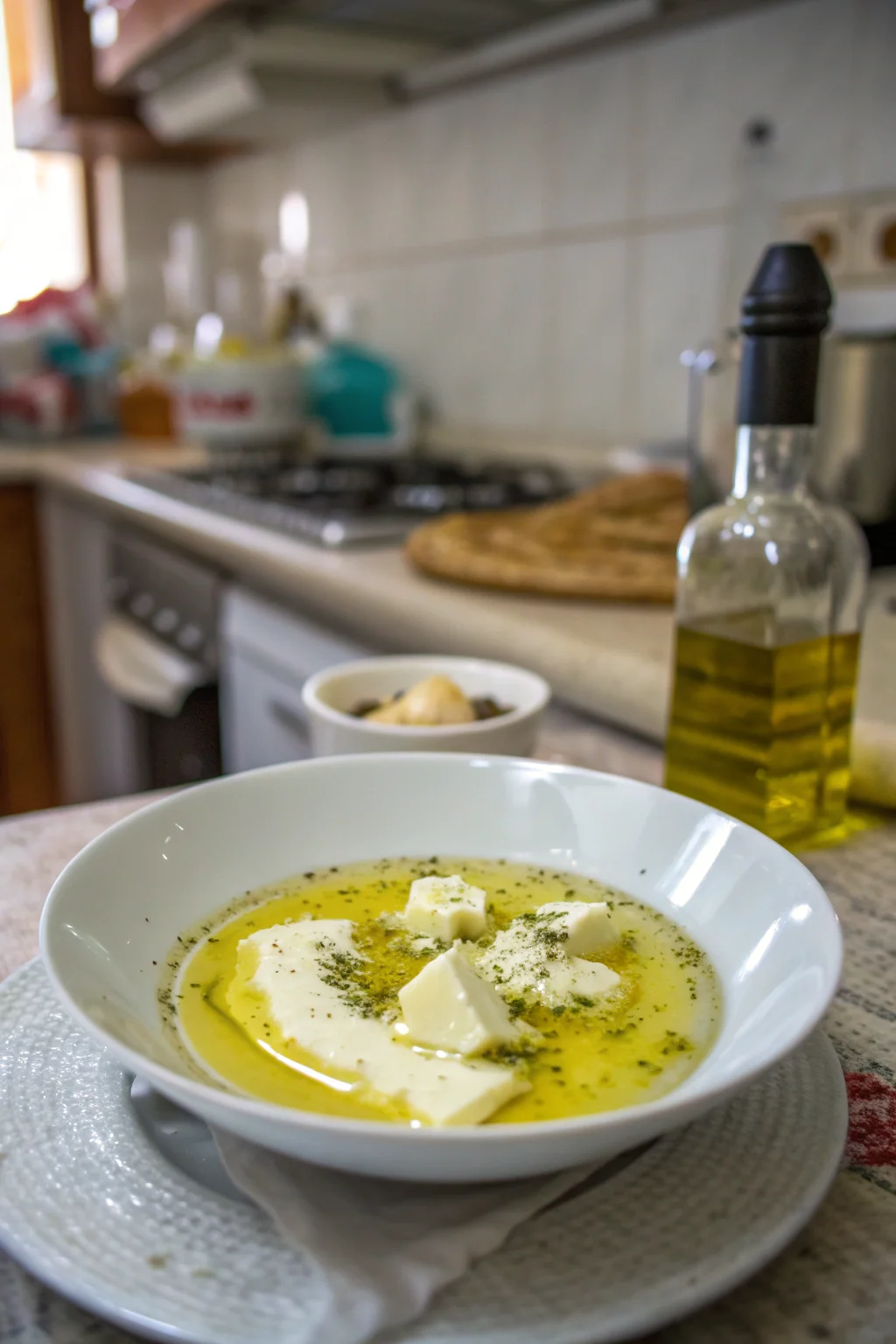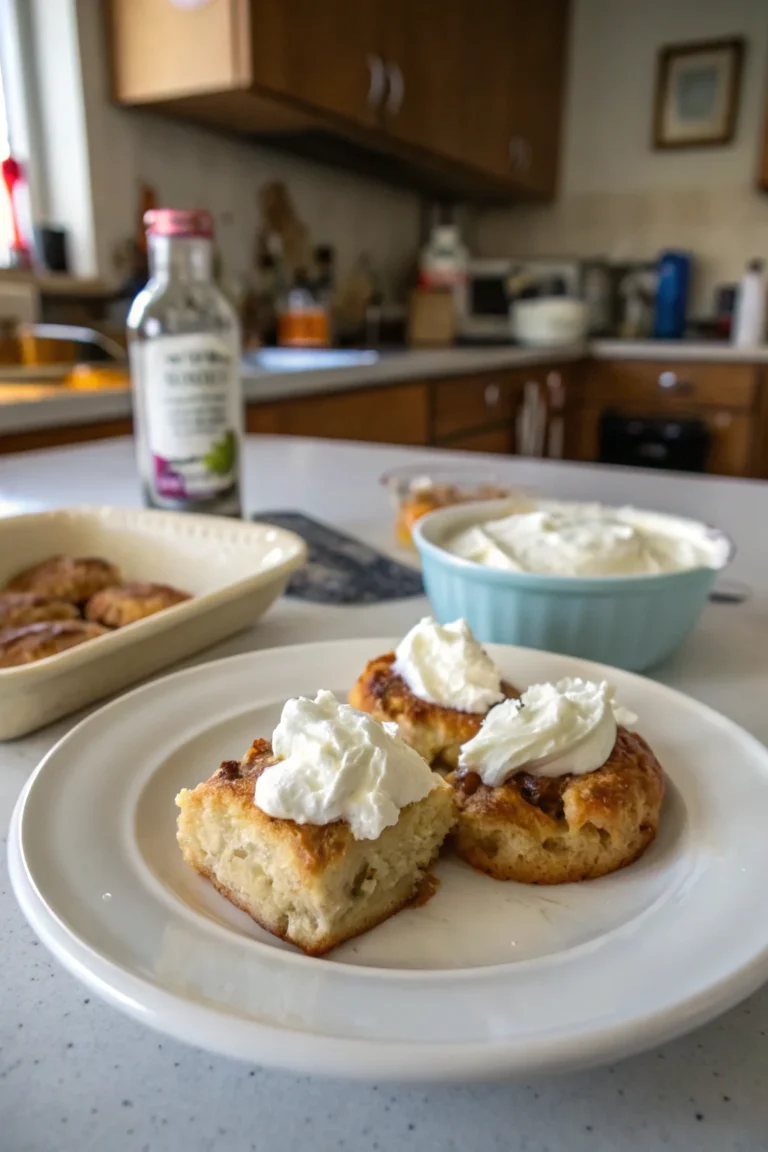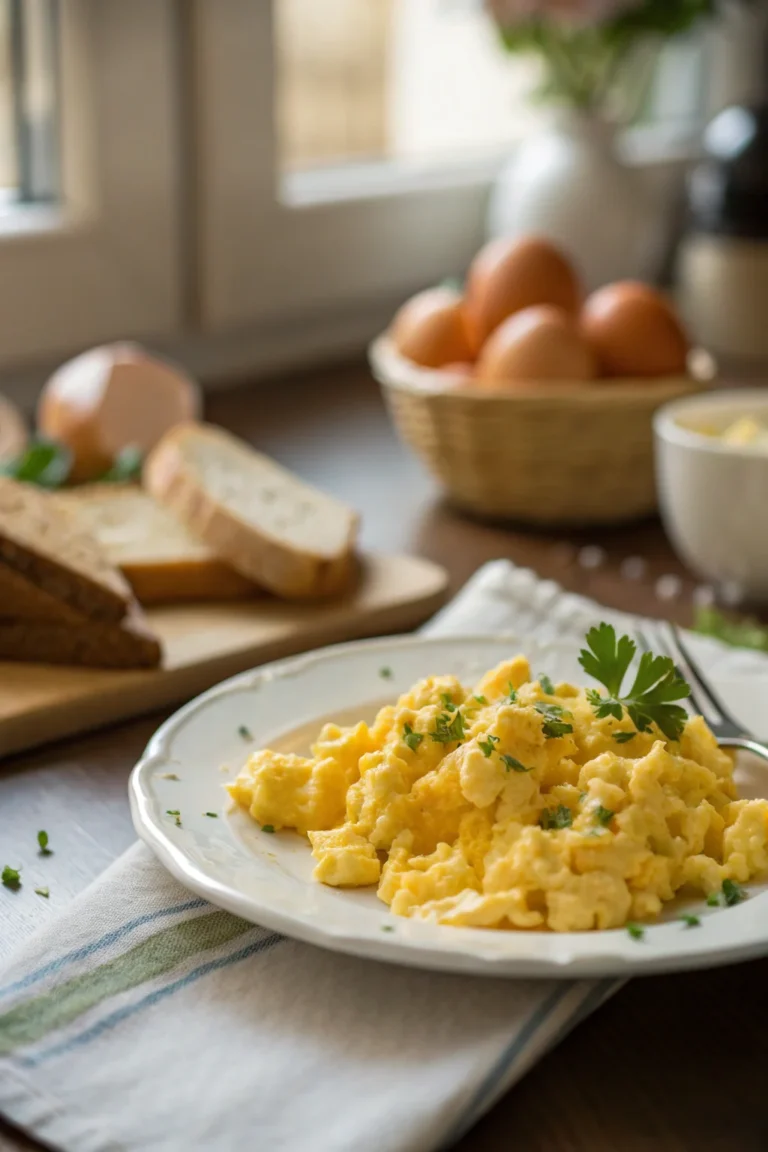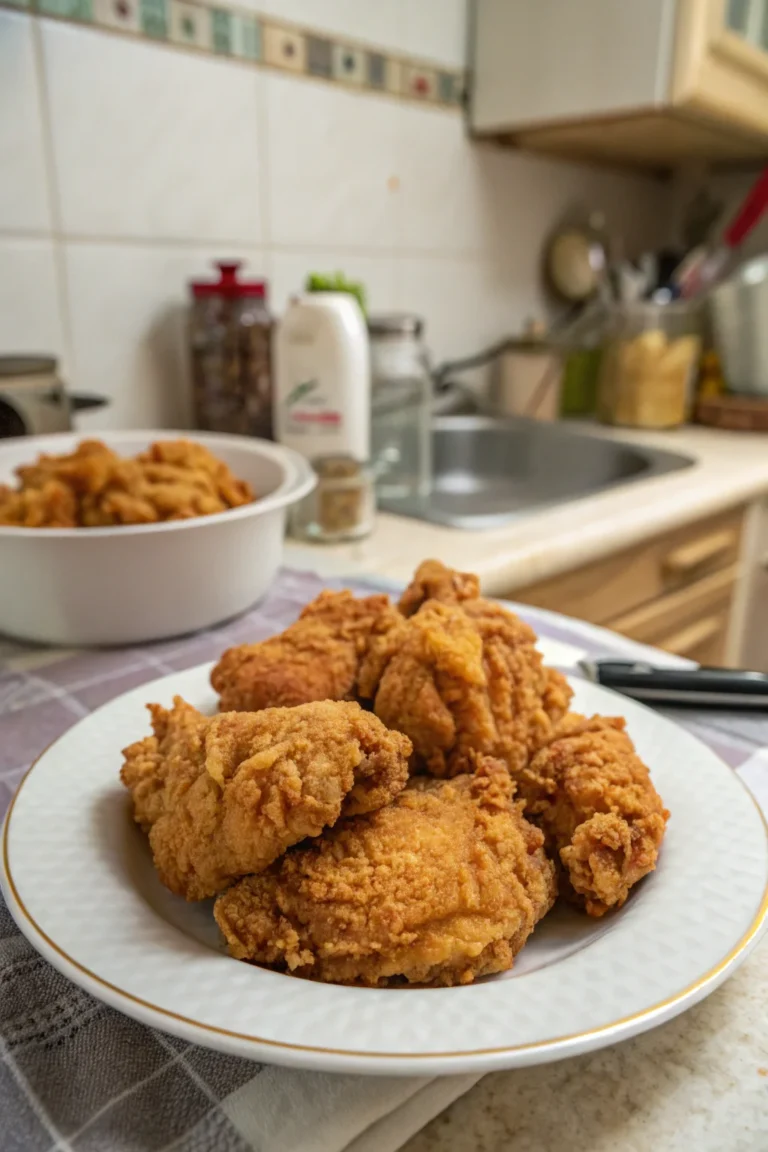Can You Mix Olive Oil and Butter for Cooking?
Cooking with a combination of olive oil and butter is a popular technique that many home chefs swear by. This blend brings together the rich flavor of butter with the health benefits and higher smoke point of olive oil. Whether you’re sautéing vegetables or preparing a savory sauce, mixing these two fats can enhance your culinary creations. Let’s explore some common questions about this cooking method.
Table of Contents
Why Mix Olive Oil and Butter for Cooking?

Combining olive oil and butter can offer the best of both worlds:
Flavor and Health: Butter provides a rich and creamy flavor, while olive oil adds a hint of fruitiness and health benefits from monounsaturated fats. This duality creates a nuanced palette of flavors that can complement a range of dishes, from pastas to grilled meats.
Improved Smoke Point: Butter alone has a low smoke point, around 300°F (150°C), which can limit its use in high-heat cooking techniques like frying. Mixing it with olive oil raises the smoke point to approximately 375°F (190°C), making it more suitable for higher-heat cooking without the risk of burning.
This blend is great for sautéing, frying, and even baking, where you want both flavor and performance. Additionally, the mixture can be used to start off soups and stews by sautéing aromatics, such as onions and garlic, offering a depth of flavor that sets the foundation for any dish.
What Are the Benefits of Using Olive Oil and Butter Together?
The combination of olive oil and butter provides several benefits:
Enhanced Flavor: The mix creates a balanced, savory taste that is richer than using either fat alone. It can enhance the flavor of simple ingredients, turning a basic dish into something extraordinary. For instance, using this blend to sauté mushrooms can result in a deeper, more complex flavor profile, as the fats help to draw out and meld the umami flavors.
Nutritional Advantages: Olive oil is known for its heart-healthy fats and antioxidants, such as vitamin E and polyphenols, which have anti-inflammatory properties. Meanwhile, butter adds essential vitamins like A, D, E, and K, which are fat-soluble and therefore better absorbed when consumed with fats.
Versatility: This combination is suitable for various cooking methods, including frying, roasting, and even baking. For example, when roasting vegetables, using a mixture of olive oil and butter can help achieve a perfect balance of crispiness and moisture, resulting in a delightful texture and enhanced taste.
Using them together allows you to capitalize on the strengths of each ingredient, providing both culinary satisfaction and health benefits. This blend can be a secret weapon in your kitchen, making your dishes stand out with their unique flavor and texture.
How Do You Mix Olive Oil and Butter?
To mix olive oil and butter effectively:
Proportions: A common starting ratio is 1:1, but you can adjust based on personal preference or the specific requirements of the dish. If you desire a more robust buttery flavor, increase the butter slightly. Conversely, for a healthier profile with a lighter taste, use more olive oil.
Melting: Melt the butter gently in a pan over low heat, then add the olive oil. This gentle melting process helps to prevent the butter from browning or burning, which can occur quickly due to its milk solids.
Stirring: Mix until fully combined, ensuring an even distribution. Stirring continuously while the butter melts ensures that the fats are well integrated, creating a uniform base for cooking.
This method helps prevent burning and ensures a consistent texture, creating a reliable foundation for any dish. When making a sauce, for instance, this blend provides a smooth, velvety finish that clings beautifully to pasta or vegetables.
Is It Healthier to Use Olive Oil and Butter Instead of Just Butter?
Yes, it can be healthier:
Reduced Saturated Fats: Olive oil contains significantly lower levels of saturated fats compared to butter. By combining them, you can reduce the overall saturated fat content of your dish while still enjoying the creamy texture and flavor that butter provides.
Added Nutrients: Olive oil is rich in beneficial polyphenols and omega-3 fatty acids, which are known for their cardiovascular benefits. These components can help reduce the risk of chronic diseases when included as part of a balanced diet.
While butter offers its own nutritional benefits, such as providing a source of energy and essential vitamins, olive oil can enhance the health profile of your meals when used in moderation. This combination allows you to enjoy the best of both worlds, supporting both flavor and health.
Can You Bake with a Mix of Olive Oil and Butter?

Absolutely! Mixing olive oil and butter for baking can:
Improve Texture: The combination can yield moist and tender baked goods. Olive oil contributes to a tender crumb, while butter provides structure and richness. For example, using this blend in a cake recipe can result in a dessert that is both fluffy and flavorful.
Enhance Flavor: Olive oil adds subtle complexity that complements the richness of butter. It can add a unique dimension to baked goods, such as cookies or muffins, where the olive oil’s fruitiness enhances the other flavors and aromas.
Consider using this blend in cookies, cakes, and bread for a delightful twist. It can also be used in savory baked goods, such as quiches or savory scones, where the combination of buttery richness and olive oil’s nuanced flavor can elevate the dish to new heights.
Does Mixing Olive Oil and Butter Affect the Smoke Point?
Yes, it does:
Higher Smoke Point: Butter’s smoke point increases when mixed with olive oil, making it more suitable for high-heat cooking. This is particularly advantageous when searing meat or frying foods, where maintaining a consistent high temperature is crucial for achieving the desired texture without burning the fats.
Preventing Burning: Olive oil helps stabilize the mixture, reducing the risk of burning during frying or sautéing. This stability allows for longer cooking times at higher temperatures without the fear of the fats breaking down or imparting a burnt flavor.
This makes the blend ideal for dishes requiring longer cooking times at higher temperatures, such as pan-fried fish or crispy potatoes, where both flavor and texture are enhanced by the combination of fats.
Can You Use Olive Oil and Butter for Frying?
Certainly! This combination is excellent for frying:
Flavor and Crispness: The mix imparts a delicious taste while achieving a crispy texture. The butter adds richness and aids in browning, while the olive oil ensures that the food is cooked evenly and doesn’t stick to the pan.
Temperature Control: The improved smoke point allows for better temperature management, which is crucial for achieving perfect frying results. This control helps ensure that foods like fried chicken or tempura remain golden and crispy on the outside while being juicy and cooked through on the inside.
Use this blend for frying meats, vegetables, and even eggs for a flavorful finish. The combination of fats not only enhances the taste but also contributes to a perfect texture, making your fried dishes a standout success.
What Types of Olive Oil Work Best with Butter?
When choosing olive oil to mix with butter, consider:
Extra Virgin Olive Oil (EVOO): Offers the most flavor and health benefits, ideal for low to medium heat. Its robust flavor can enhance dishes where the oil is a prominent component, such as dressings or marinades.
Light Olive Oil: Has a more neutral flavor and a higher smoke point, suitable for high-heat cooking. This type of olive oil is perfect for situations where you want the health benefits of olive oil without its strong flavor dominating the dish.
Selecting the right type depends on the dish and desired flavor profile. For instance, when making a delicate sauce, you might choose a light olive oil to let other flavors shine, whereas in a herb-laden pasta, EVOO might be the better choice to complement the herbs.
Are There Any Downsides to Mixing Olive Oil and Butter?
While beneficial, there are a few considerations:
Caloric Content: Both fats are calorie-dense, so moderation is key. It’s important to be mindful of portion sizes, especially if you’re watching your calorie intake. A little goes a long way in adding both flavor and texture to dishes.
Flavor Balance: The strong taste of EVOO might overpower delicate dishes if not balanced properly. In such cases, using a more neutral-flavored olive oil or adjusting the ratio can help maintain the intended flavor profile without overwhelming other ingredients.
Being mindful of these factors helps maintain a healthy and flavorful diet. Understanding how these fats interact with other ingredients and adjusting as necessary can ensure that your dishes are both delicious and balanced.
How Does the Flavor Change When Mixing Olive Oil and Butter?
The flavor profile becomes richer and more complex:
Butter’s Creaminess: Remains prominent but is complemented by olive oil’s fruity notes. This combination can add depth to simple dishes, making them taste more luxurious and satisfying.
Olive Oil’s Freshness: Adds a subtle, aromatic quality that can lift the flavors of a dish, providing a nuanced background that enhances the main ingredients.
This combination can elevate both savory and sweet recipes, providing depth and richness. For example, using this blend in a risotto can enhance the creaminess while adding a subtle complexity from the olive oil, creating a dish that’s both comforting and sophisticated.
Is It Better to Use Salted or Unsalted Butter with Olive Oil?
Consider your recipe needs:
Unsalted Butter: Offers more control over the salt content, suitable for baking and precision cooking. This allows you to tailor the seasoning to your taste and dietary preferences, ensuring that other flavors are not overshadowed by salt.
Salted Butter: Can enhance flavor in savory dishes but may require adjustments to other seasonings. It’s often a convenient choice for everyday cooking, where the additional salt can contribute to a well-rounded flavor profile.
Choose based on your dish’s flavor balance and dietary preferences. Understanding the role of salt in your recipe will guide you in selecting the appropriate type of butter to pair with olive oil.
Can This Mix Be Used in Sauces and Dressings?
Yes, it enhances sauces and dressings:
Creamy Texture: The blend adds richness and smoothness to sauces, creating a luxurious mouthfeel that clings well to pasta or vegetables. This can be particularly beneficial in cream-based sauces, where the combination of fats provides both flavor and stability.
Flavorful Dressings: Olive oil’s fruity notes pair well with the creamy butter, perfect for vinaigrettes or drizzles. This blend can add depth and complexity to simple salad dressings, enhancing the flavors of fresh greens or roasted vegetables.
Experiment with this mix to create unique, flavorful sauces and dressings. The combination of butter and olive oil can transform a basic vinaigrette into a standout accompaniment that’s both vibrant and satisfying.
Are There Any Alternatives to Mixing Olive Oil and Butter?
Certainly, alternatives include:
Ghee and Olive Oil: Ghee offers a nutty flavor and high smoke point, complementing olive oil well. This combination can be particularly useful in Indian cuisine or dishes where a subtle nutty aroma is desired.
Coconut Oil and Butter: Provides a tropical note, suitable for specific dishes. This pairing can add a unique flavor to baking or Asian-inspired dishes, where the sweetness of coconut oil complements the richness of butter.
These alternatives offer different flavors and benefits, expanding your cooking options. By experimenting with various fat combinations, you can discover new taste profiles and textures that enhance your culinary repertoire.
Conclusion
Mixing olive oil and butter for cooking is a versatile technique that enhances flavor and performance in the kitchen. By understanding how to use them together effectively, you can elevate your culinary creations. Whether frying, baking, or preparing sauces, this combination can provide both health benefits and delicious taste.
For more tips on cooking with oils and fats, check our guide on healthy cooking oils and explore our cooking techniques section.
Remember, the key to successful cooking is experimenting and finding what works best for your taste and dietary needs. Enjoy the delightful possibilities that olive oil and butter bring to your meals!
More on dessertpedia.blog • Search “Can You Mix Olive Oil and Butter for Cooking?”






